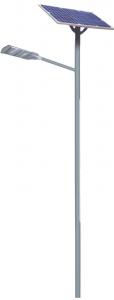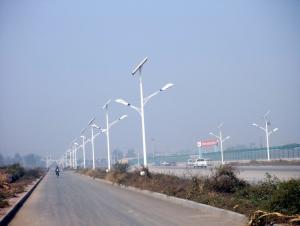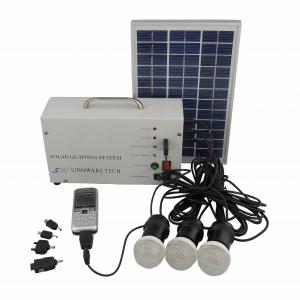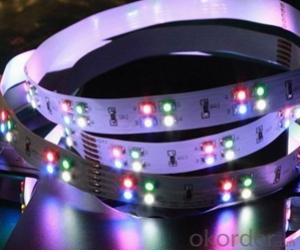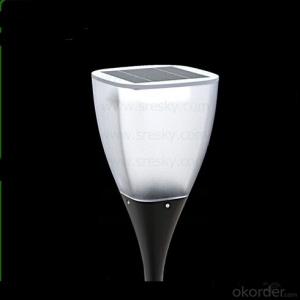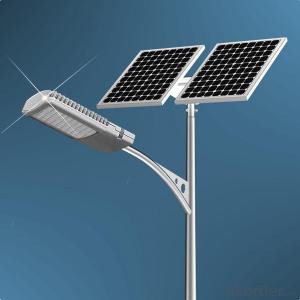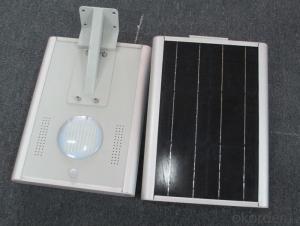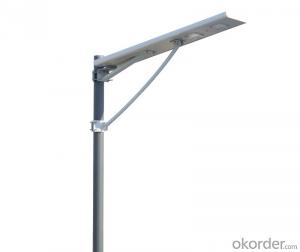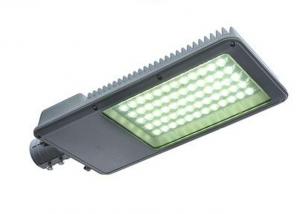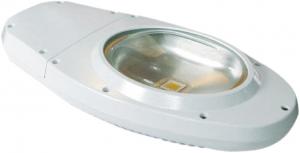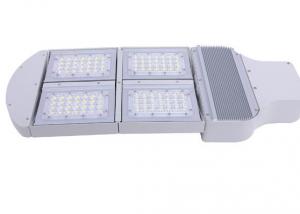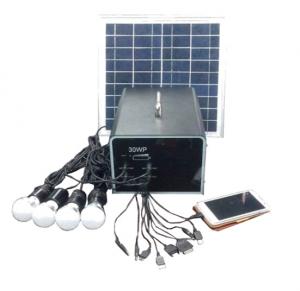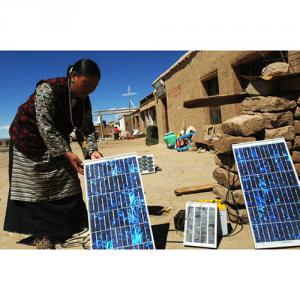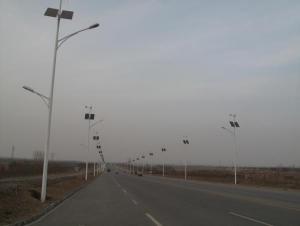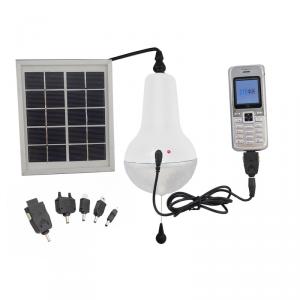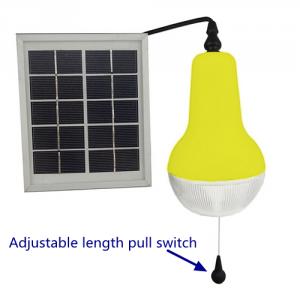Solar street light 70W
OKorder Service Pledge
Quality Product, Order Online Tracking, Timely Delivery
OKorder Financial Service
Credit Rating, Credit Services, Credit Purchasing
You Might Also Like
Mode:DZS-01
Light:70w
Working voltage :24V
material:Q235 steel
luminous flux:8400Lm
life span:more than 50000h
colar temperature:3300k-6500k
light body size:8m
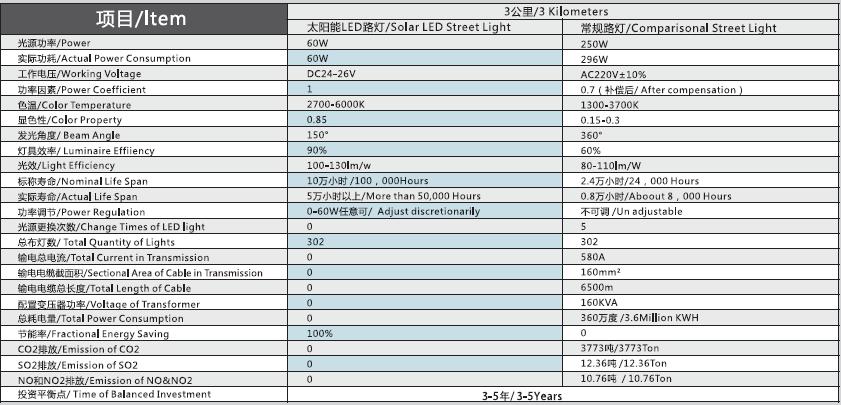
- Q:Can solar lights be used in remote locations without electricity?
- Yes, solar lights can be used in remote locations without electricity. Solar lights operate by converting sunlight into electricity through solar panels, storing the energy in batteries, and then illuminating the area at night using the stored power. Since they do not rely on an electrical grid, they are an ideal lighting solution for off-grid or remote areas where access to electricity is limited or nonexistent.
- Q:How do solar lights charge during rainy seasons?
- Solar lights can still charge during rainy seasons, although at a slower rate. The solar panels on the lights can absorb some sunlight even on cloudy or rainy days. However, the charging efficiency may be reduced due to the reduced amount of sunlight available.
- Q:Are solar lights resistant to damage from hailstorms?
- Solar lights are typically designed to endure various weather conditions, although their ability to withstand hailstorms may differ based on the individual design and quality of the light. While some solar lights may possess greater durability and resilience to hailstorms, others may be more susceptible to harm. When assessing a solar light's resistance to hailstorms, it is crucial to take into account its construction and materials. Generally, lights constructed from robust and enduring materials like tempered glass or polycarbonate lenses are more apt to withstand hail impact without sustaining damage. Moreover, lights equipped with sturdy housing and secure mounting systems are less likely to be dislodged or impaired by hail. Nevertheless, it is essential to recognize that even the most sturdy solar lights may still incur damage in severe hailstorms. Therefore, it is advisable to consult the manufacturer's specifications and guidelines to obtain information on a solar light's specific hailstorm resistance prior to purchasing or installing it in an area prone to hailstorms.
- Q:Are there solar lights for outdoor zoos or wildlife preserves?
- Yes, there are solar lights available specifically designed for outdoor zoos and wildlife preserves. These lights are powered by the sun's energy and provide sustainable lighting solutions for pathways, exhibits, and other outdoor areas in these environments. Solar lights are energy-efficient, environmentally friendly, and can help reduce the carbon footprint of these establishments.
- Q:Are solar lights suitable for roadways and highways?
- Yes, solar lights are suitable for roadways and highways. They are a cost-effective and energy-efficient alternative to traditional grid-powered street lights. Solar lights can provide sufficient illumination for roadways and highways, enhancing safety and visibility, while also reducing carbon emissions and reliance on fossil fuels. Additionally, solar lights offer flexibility in installation and maintenance, as they do not require extensive electrical infrastructure.
- Q:Can solar lights be used for outdoor art festivals or fairs?
- Outdoor art festivals or fairs can definitely make use of solar lights. They are actually quite popular and environmentally conscious when it comes to brightening up outdoor spaces during these occasions. What makes them so practical is that they can be easily installed and moved around without the need for wiring or electricity. Rather, they gather sunlight during the day and store the energy in batteries, which then powers the lights during the night. Consequently, these lights can create a delightful and soothing ambiance throughout the entire event, eliminating the need for traditional power sources. Moreover, there is a wide range of styles and designs available, allowing organizers to select the ones that best suit the artistic atmosphere of the festival or fair. On top of that, incorporating solar lights into the event can significantly reduce its carbon footprint, making it a sustainable and environmentally friendly choice.
- Q:Do solar lights have adjustable light color temperature for different moods?
- No, solar lights typically do not have adjustable light color temperature for different moods. Solar lights are designed to harness and utilize solar energy to provide outdoor lighting. They are usually equipped with LED bulbs that emit a specific color temperature, which is often a cool white or warm white light. These color temperatures are predetermined and cannot be adjusted to accommodate different moods or preferences. However, some solar lights may offer different lighting modes, such as a steady or flickering light, which can create a different ambiance but not a change in color temperature.
- Q:Are solar lights suitable for historical or heritage sites?
- Solar lights can be a suitable option for historical or heritage sites, depending on various factors. One of the key considerations is the site's preservation requirements. Solar lights are typically low-impact and can be easily installed without causing damage to the site's infrastructure or surrounding environment. This is especially important for historical or heritage sites where preservation and conservation are top priorities. Moreover, solar lights offer the advantage of being independent from the electrical grid. This means that they can be installed in remote or hard-to-reach areas, without the need for extensive electrical infrastructure. This can be particularly beneficial for historical or heritage sites located in rural or less developed areas. Solar lights also have the advantage of being energy-efficient and environmentally friendly. They harness solar energy during the day and store it in batteries, which then power the lights at night. This sustainable approach reduces the carbon footprint of the site while providing adequate lighting for visitors and enhancing safety and security. However, it is essential to consider the specific lighting requirements of the historical or heritage site. Solar lights might not be suitable for sites that require high-intensity lighting or for areas with limited sunlight exposure due to dense tree cover or building shadows. In such cases, hybrid lighting systems that combine solar and traditional grid-powered lights could be considered as a compromise. Ultimately, the suitability of solar lights for historical or heritage sites depends on the specific needs and constraints of each site. A thorough analysis of the site's requirements, including lighting needs, preservation concerns, and environmental considerations, should be conducted to determine the most appropriate lighting solution.
- Q:Can solar lights be used for flagpole lighting?
- Yes, solar lights can be used for flagpole lighting. Solar-powered flagpole lights are designed to illuminate flags at night using renewable energy from the sun. They are convenient, cost-effective, and eco-friendly alternatives to traditional flagpole lighting options.
- Q:Can solar lights be used in historical or heritage sites?
- Yes, solar lights can be used in historical or heritage sites. They offer a viable and sustainable lighting solution that does not require any external power source or wiring, making them ideal for preserving the authenticity and integrity of such sites. Additionally, solar lights can be strategically placed to highlight architectural features or pathways, enhancing the overall visitor experience while minimizing any potential damage or disruption to the site.
1. Manufacturer Overview |
|
|---|---|
| Location | |
| Year Established | |
| Annual Output Value | |
| Main Markets | |
| Company Certifications | |
2. Manufacturer Certificates |
|
|---|---|
| a) Certification Name | |
| Range | |
| Reference | |
| Validity Period | |
3. Manufacturer Capability |
|
|---|---|
| a)Trade Capacity | |
| Nearest Port | |
| Export Percentage | |
| No.of Employees in Trade Department | |
| Language Spoken: | |
| b)Factory Information | |
| Factory Size: | |
| No. of Production Lines | |
| Contract Manufacturing | |
| Product Price Range | |
Send your message to us
Solar street light 70W
OKorder Service Pledge
Quality Product, Order Online Tracking, Timely Delivery
OKorder Financial Service
Credit Rating, Credit Services, Credit Purchasing
Similar products
New products
Hot products
Hot Searches
Related keywords
